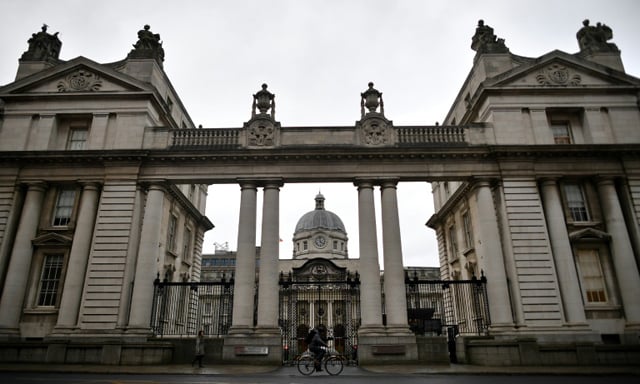
DUBLIN, Nov 22, 2024 (BSS/AFP) - Ireland goes to the polls next week with the
outgoing centre-right coalition tipped to return to power, despite opposition
rancour at a housing and cost-of-living crisis.
During the last parliamentary term, Simon Harris's centre-right Fine Gael
shared power with another centre-right party Fianna Fail, and the role of
prime minister rotated between the two party leaders.
The smaller Green Party made up the governing coalition.
The November 29 election is the first since 2020, when Fine Gael, which has
been in office since 2011, dropped to third place behind the leftist-
nationalist Sinn Fein, the former political wing of the paramilitary IRA
group, and Fianna Fail.
But Harris has re-energised his party since he replaced his predecessor Leo
Varadkar in April aged just 37 to become Ireland's youngest ever taoiseach
(prime minister).
The "TikTok Taoiseach", as he has been dubbed in the media because of his
social media savvy, has helmed a robust recovery in the party's opinion poll
ratings.
Harris, now 38, called a snap election earlier this month and has stressed
that returning Fine Gael to power would ensure stability, while a giveaway
budget last month was aimed at shoring up support with voters fretting over
sky-high housing and childcare costs.
Gail McElroy, a political scientist at Trinity College Dublin, cautioned that
more than half of Irish voters only make up their minds during the campaign.
"All is still to play for, but a return of the incumbent government (minus
the Green Party) is a very realistic possibility," she told AFP.
On the campaign trail, Harris has had to defend the government's patchy
record on tackling the worsening housing crisis over the last decade, as well
as fend off accusations of wastage in public spending.
His party also saw a slew of former lawmakers step down from competing in the
general election, with the low profile of their replacements presenting a
potential banana skin for Fine Gael's prospects.
- Status quo? -
The experienced deputy taoiseach Micheal Martin, 64, leads Fianna Fail which
is also competing for the centrist vote.
A palette of small leftist and conservative parties are in the opposition mix
along with Sinn Fein.
Sinn Fein, led by Mary Lou McDonald, 55, appeared inevitably bound for
government after surprisingly topping the popular vote in 2020.
But the party's ratings have slumped precipitously in the last year.
It lost frontrunner status as much of its working-class voter base deserted
it over the leadership's progressive stance on social issues and migration
policy as immigration rose up the table of voter concerns.
McDonald has campaigned heavily on housing policy and portrayed Sinn Fein as
the only alternative to the status quo.
The two other main parties have swapped power between them since Irish
independence from Britain was gained in 1921.
A diverse group of independent candidates from across the political spectrum
-- a unique feature of the Irish political landscape -- together poll around
20 percent.
Although that high vote share is dissipated from right to left, some
independents could play a role in the formation of the next government if
Fine Gael and Fianna Fail fall short of a majority in the 174-seat
parliament, the Dail.
Worries about the future of Ireland's economic model, which depends on
foreign direct investment and lavish corporate tax returns from mainly
American tech and pharmaceutical giants, have also cast a shadow on the
campaign.
The administration of incoming US president Donald Trump has warned that it
could impose tariffs and repatriate the corporate tax of US firms from
countries like Ireland.
Around 3.5 million of the European Union member state's 5.4 million
population are eligible to vote when polls open next Friday.
The count begins on November 30 with partial results expected through the
day.
Due to Ireland's proportional representation system a final result may not be
clear for days while votes of eliminated candidates are redistributed during
multiple count rounds.